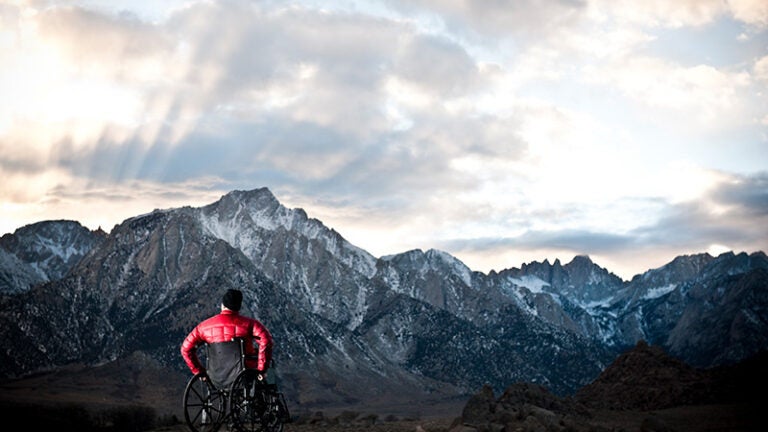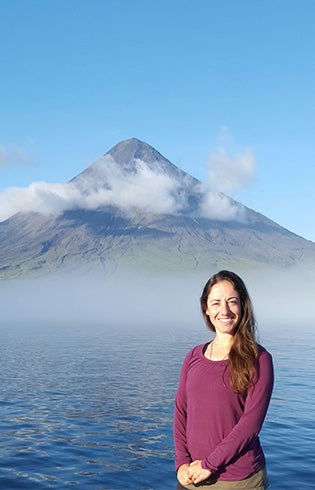
5 ways to make your classroom more inclusive
Recent discussions around racism and sexual harassment in the academy have prompted many to consider how to make academic institutions more equitable.
“After the killing of George Floyd, Breonna Taylor, Ahmaud Arbery and many others, there was this collective momentum to acknowledge institutional racism and to try to address it in some way,” says Emily H. G. Cooperdock, assistant professor of Earth sciences at the USC Dornsife College of Letters, Arts and Sciences. “Geosciences has recognized for decades that it has a diversity problem, and yet there has been little improvement. The hope is that this time can be different.”
Cooperdock recently produced a paper that shares guidelines for reducing bias in the classroom, field and lab. Although she has a specific focus on the geosciences, Cooperdock believes that many of these principles can be expanded to other fields of study that use similar environs.
“Although we recognize that combating racism and other forms of systemic bias require large-scale institutional actions, there is much work that can be readily done right now by individuals,” she says. “Overall, we want to inspire individuals to take actions that can reduce bias within their spheres of influence.”
Go outside your comfort zone
Thinking outside your own comfort-levels can help instructors proactively reduce bias. What one person finds familiar may feel dangerous to another. For example, men likely don’t feel uncomfortable working alone in a lab with another man but women might find it anxiety-inducing.
White professors may feel comfortable around campus security while students of color might find their presence alarming. Able-bodied teachers may not notice that there aren’t any microscopes in the classroom at wheelchair-level.
“To counteract this, [instructors] must come to terms with their own positionality, which is the way that one’s identity and background shape one’s social standing, power and experience in an inequitable world,” says Cooperdock
Rearranging lab equipment or learning bystander training to assist students who face harassment can help people feel more supported.
Adopt and enforce codes of conduct
At the start of the semester, instructors can provide students with a written code of conduct and guidelines for behavior in the classroom and lab. This should include clear instructions for campus resources for students needing assistance if they experience harassment.

Cooperdock runs the USC Helium Lab, which is focused on innovative new ways to date minerals. (Photo: Courtesy of Emily H. G. Cooperdock.)
Have a class discussion about the importance of inclusivity — and the steps you’ll be taking to bring this value into the classroom — to set expectations from the start.
Engage universal design principles
Making sure your classroom materials are accessible fosters success. Providing recorded and closed-captioned lectures allow the hearing-impaired and non-native English speakers a chance to stay on track
Submitting textbook lists early to the campus bookstore enables the store to order accessible copies. Building an accessible syllabus can also keep students engaged.
Make the field safe
Field work is an exciting part of many scientific fields, but it can pose challenges for those who are disabled. The International Association of Geosciences lists resources for those in the Earth sciences looking to make their field work more accessible, including a library of inclusive field technology.
Additionally, field work can be unsafe for women, people of color and the LGBT community, who might face discrimination in certain areas of the world. In a 2014 survey, more than 64% of women reported experiencing sexual harassment and 20% experienced sexual assault while doing fieldwork.
Selecting safe locations for field work, creating safety plan protocols and establishing safety procedures once a student is in the field can help protect researchers. Taking safety into account may require creativity and persistence
For instance, at the Imperial College of London a required field trip to Oman — where same-sex relationships are illegal — was replaced, thanks to repeated faculty petitions, with a more inclusive coursework option that used data from Oman rather than mandating travel.
Excursions, and their associated travel and equipment costs, can also be unaffordable to low-income students and even those from middle-income families. Sharing information about scholarships that cover the cost of trips or building in lower-cost alternatives can help make sure these students stay in a program.
Promote diverse role models
In 2019, students from underrepresented populations earned less than 16% of geoscience degrees, and the field is the least diverse of the STEM disciplines in the United States. Showcasing diverse role models to students inspires a sense of belonging and can boost retention rates for underrepresented groups.
Instead of using only textbook portrayals of white male geoscientists, teachers can highlight contributions by scientists from marginalized backgrounds. Instructors can also share the Twitter accounts of scientists of color or introduce students to initiatives like the National Association of Black Geoscientists and GeoLatinas
Fields like geosciences must grapple with dark, often racist histories. Many scientists in the 19th century promoted ideas about the racial inferiority of Black, Indigenous and Asian people. Later, segregated classrooms and labs continued the work of exclusion.
Today’s instructors have an opportunity, and a responsibility, to help course correct our misdeeds and help every student thrive equitably, says Cooperdock. This work can also help advance scientific progress.
“By reducing bias, we hope to increase diversity, which brings in fresh ideas, perspectives and ways of thinking that are shown again and again to advance scientific discovery,” says Cooperdock. “We also want to retain and support that diverse workforce so they may practice their science to the fullest.”